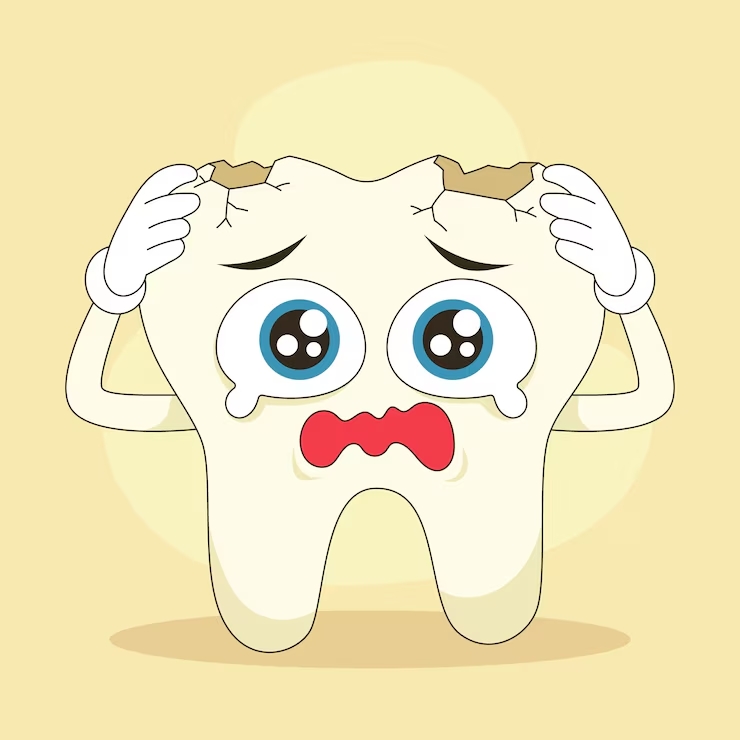What to do if a filling falls out ?
In case a dental filling is out it is very essential to respond appropriately before further damage, pain, and possible infection occurs. Here’s a simple guide on what to do:Here’s a simple guide on what to do:
1. Assess the Situation
- Check for Symptoms: If ever you find yourself with soreness, check and see whether it precedes consuming hot or cold food, beverages, sweets or anything acidic.
- Feel for Rough Edges: Take this peice of flesh and take it to trace the sharp or rough surface on the tooth that may cause harm in the mouth.
- Look at the Filling Piece: Reduce opacity and check what the filling looks like. It helps when one knows whether it was a white composite filling, or a silver amalgam or any other type.
2. Clean the Area
- Rinse Your Mouth: This involves taking half a teaspoon of salt and mixing it with warm water to make a mouthwash that should be gargled. This is good to avoid crowding and ensure that the environment is clean to reduce the spread of infections.
- Brush and Floss Gently: Finally, rinse your mouth gently with warm water especially around the effected tooth without rubbing hard because this will worsen the situation or bring out more food debris which you should use a soft bristle tooth brush and floss around the affected area, removing every food particle.
3. Manage Pain and Discomfort
Pain Relief:
- Painkillers: Also administered pain such as ibuprofen or acetaminophen if you are experiencing a headache. Follow the dosage instructions.
- Clove Oil: The eugenol in clove oil has an anaesthetic property that can partially deaden the sensation coming from the damaged tooth and gum area; just dab a small amount on to the tooth and gum, but don’t overdo it since it has other negative side effects.
4. Avoid Certain Foods
- Eat Soft Foods: It is wise to avoid hard foods such as meat, popcorn and vegetables that have a tendency of causing more harm to the tooth.
- Avoid Hard and Sticky Foods: Avoid foods like nuts, hard candies, chewing gum, etc; anything that might harm the rooted tooth or shift the removable temporary filling.
5. Contact Your Dentist
- Schedule an Appointment: It is advisable you talk to your dentist soon and explain whatever happened. Schedule an appointment is important to prevent such mishaps as when the patient is not keen they may delay and their condition worsens.
- Emergency Services: Emergency dental services should be sought if the above symptoms become severe, swollen or infected.
6. Long-Term Considerations
Post-Treatment Care:
- Follow-Up: Return to all the appointments that your dentist will advise you to do for follow-ups to allow proper healing and receive a permanent filling.
- Preventive Care: Some important advises that people should follow to avoid such issues being a regular practice are: brushing and flossing their teeth properly, and going for regular dental check-ups.
It is necessary to lay down the various steps followed in preparing the temporary filling application in details.
- Prepare the Tooth: Use a saturated cotton tip to wipe the cavity or rinse with warm water followed by air-drying. Bury it in clean gauze or with a clean piece of cotton pads.
- Mix the Material: If required for use, then follow the direction provided in the kit to prepare the temporary filling material.
- Apply the Filling: If you prefer, you can use the tool provided, or the back of a clean finger or similar artefact to press the material flat into the cavity and to level it.
- Let It Set: Let the blended material to set. Better abstain from food or beverages for the recommended number of hours required for the proper setting of the filling.
Prevention Tips
- Regular Dental Visits: As mentioned earlier, dental problems if diagnosed early can be corrected by making regular visits to your dentist or even during dental check ups.
- Good Oral Hygiene: Clean your teeth for at least 2 times a day and use toothpaste with fluoride as well, and don’t forget to floss your teeth.
- Healthy Diet: Limit sweet foods and drinks and avoid using teeth to chew things such as ice or pens to prevent breakdown of fillings and tooth enamel.
Lifestyle Changes:
- Quit Smoking: It is important to note that Tobacco products are not friendly to your oral health and they compromise dental work.
- Use Mouthguards: In cases where one grinds their teeth at night or in the course of practicing contact sports, one should use a mouthguard so as not to compromise the fillings and teeth.
Why Fillings Fall Out
- Tooth Decay: New decay underneath the filling or next to it can weaken the filling.
- Wear and Tear: They can wear through under pressure from chewing in the mouth over some period of time.
- Bonding Failure: If the filling did not bond perfectly to the tooth, if during the filling there was material left on the tooth or if the material used for filling is old it may result in the fillings coming out.
- Trauma: An injury such as a bite on a hard object or on an object can directly knock out a filling.
Conclusion
Cavity is normal and requires treatment: A filling which has fallen out is not abnormal for many people to experience. To minimise discomfort, one should evaluate the situation as well as clean the area and the tooth, use a safeguard to cover the tooth, reduce vulnerability to pain and consider not consuming certain foods and visiting a dentist. The problem must be prevented from happening again or better oral healthcare needs to be practiced to prevent future occurrences. To ensure the proper treatment and achieving long-term results, temporary solutions are not a good idea while avoiding visiting the dentist.





 |
|